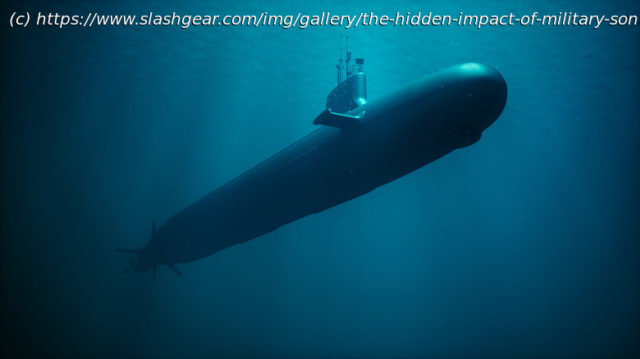Military grade SONAR is impressive technology, but it also has a hidden, detrimental effect on marine life. Here’s the science explaining why.
In 1906, Lewis Nixon invented the first SONAR-type listening device to detect icebergs. Years later, Sound Navigation and Ranging (SONAR) became a staple in naval military warfare for its ability to detect submarines. With the ocean bed holding critical oil and communication lines, submarines are key to surveillance practices necessary for threat assessment and protection. However, there are a lot of unique challenges with submarines, including navigation.
With so much of the ocean bed still unmapped, SONAR technology is used to detect geological structures underwater. SONAR is critical for people to find their way around the ocean, search for objects, and make sure threats are detected before they cause any harm. However, humans aren’t the only ones to use sound waves to make sense of their surroundings. Many animals rely on echolocation or biological SONAR to live, especially in the ocean. Here’s why the military’s use of SONAR is terrible for our friends underwater.Passive vs Active SONAR: Why it matters
According to the National Oceanic and Atmospheric Administration (NOAA), there are two types of SONAR: Active and passive. When it comes to passive SONAR, its systems can detect noise from typically loud sounds in the water. However, it can’t measure how far an object is without additional listening devices that can be used to triangulate a sound’s position. While it’s useful for finding submarines, it’s not as effective when it comes to predicting distance.
Alternatively, active SONAR works similarly to a bat inside a dark cave. Active SONAR uses energy pulses to determine an object’s distance based on how long it takes before the sound bounces back.






